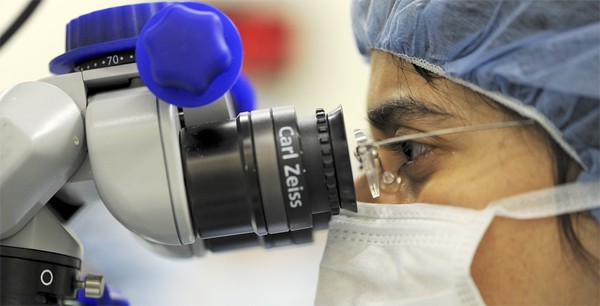
What is low vision?
Low vision is a term used to describe a degree of severity of visual loss. Patients with low vision may receive treatment within a subspecialty of optometry and ophthalmology called "low vision". Individuals with low vision have reduced vision even when using the best possible spectacle or contact lens correction is applied. Low vision may be a result of either congenital disease such as retinitis pigmentosa or Leber's congenital amaurosis or of an acquired conditions such as optic atrophy.
There are several signals of low vision:
- Difficulty recognizing a familiar face
- Difficulty reading - print appears broken, distorted or incomplete
- Difficulty seeing objects and potential hazards such as steps, curbs, walls, uneven surfaces and furniture
Causes of Low Vision
Macular Degeneration: The macula is the central part of the retina and is responsible for reading and other tasks that require the detection of fine detail. Macular Degeneration occurs when the macula becomes either thin (dry macular degeneration) or elevated and uneven due to leaking blood vessels under the retina (wet macular degeneration). People with macular degeneration have mostly peripheral vision and blurry or no central vision.
Diabetic Retinopathy: Diabetes can damage the capillaries of the retina, causing the retina to leak fluid onto the macula, and making the retina swell and blur vision. Without treatment, new blood vessels will grow along the retina and bleed, potentially destroying the retina. People with diabetic retinopathy have blurred and spotty vision.
Cataract: A cataract is a clouding of the eye's lens. Because the lens focuses the eye, a person's vision blurs when the lens becomes cloudy, just as if one was trying to look at something through a waterfall. Glare can also be a significant problem for people with cataracts.
Glaucoma: Glaucoma is an eye disease in which the normal pressure in the eye rises. This pressure can cause damage to the optic nerve and other parts of the eye. People with the most common type, open angle glaucoma, lose their peripheral vision, and as the disease worsens, the field of vision narrows.
Links are direct to Zoomax low vision information about specific eye ailments introductions.

